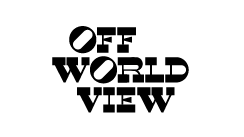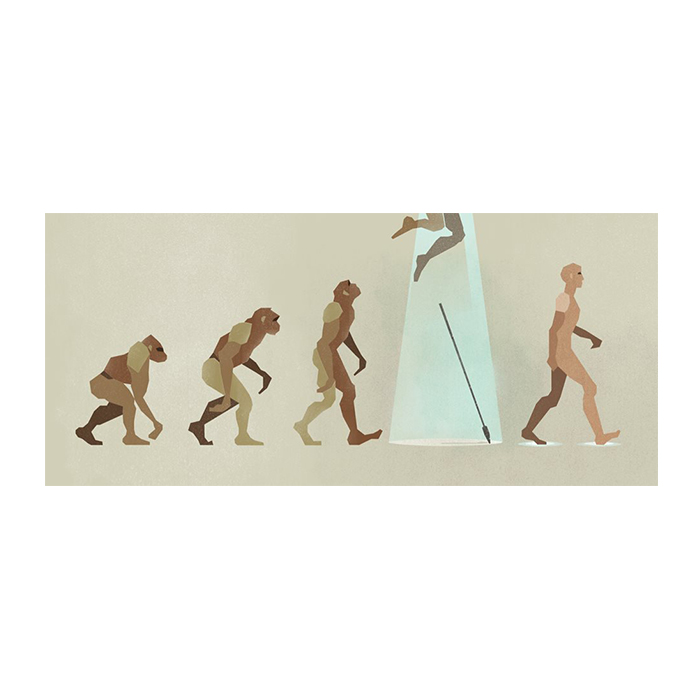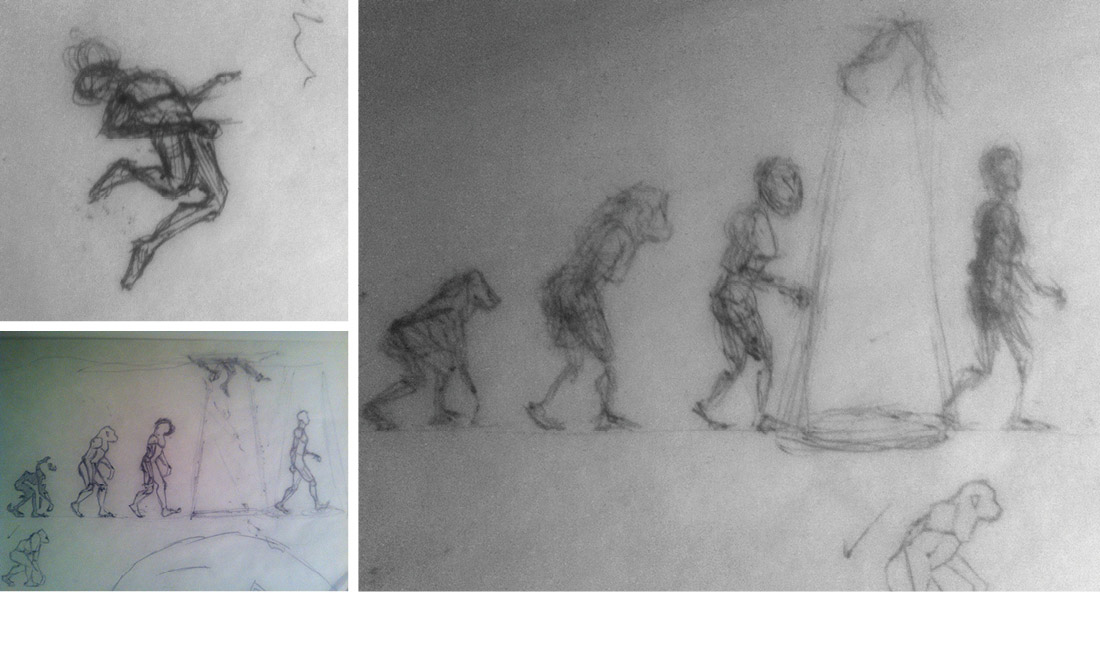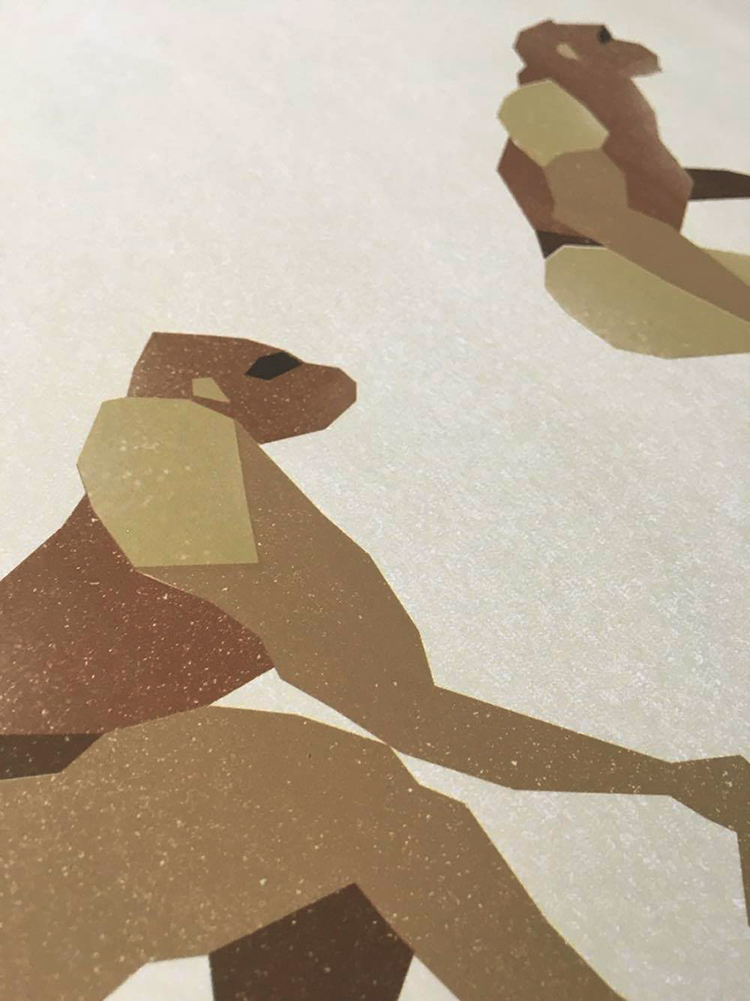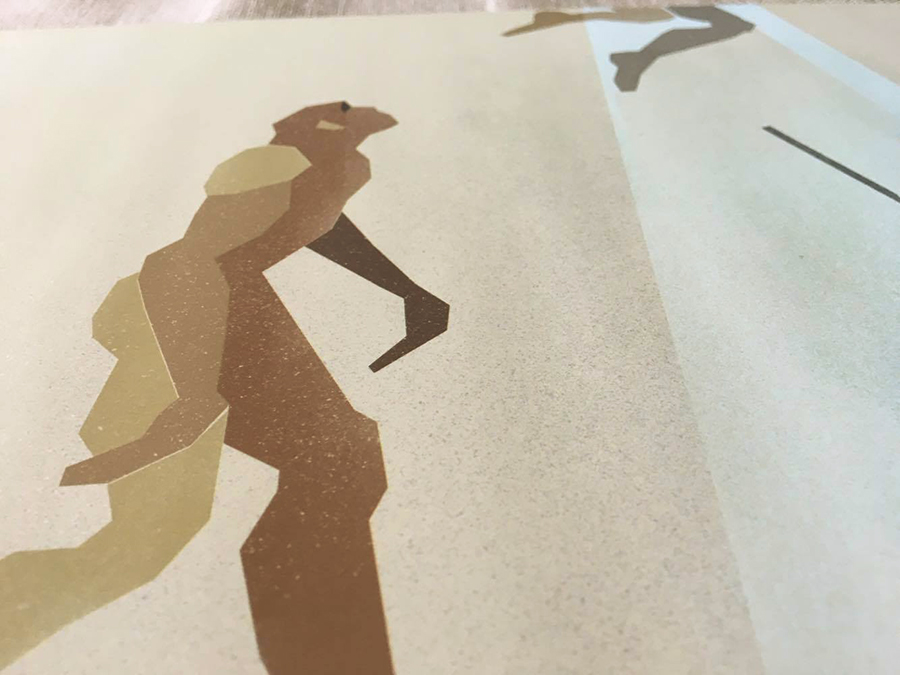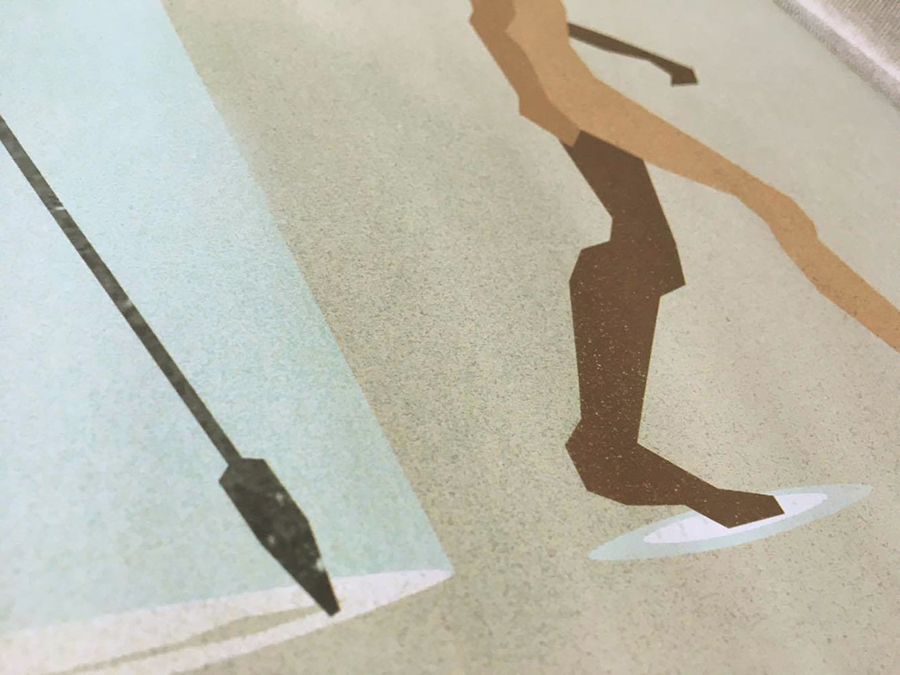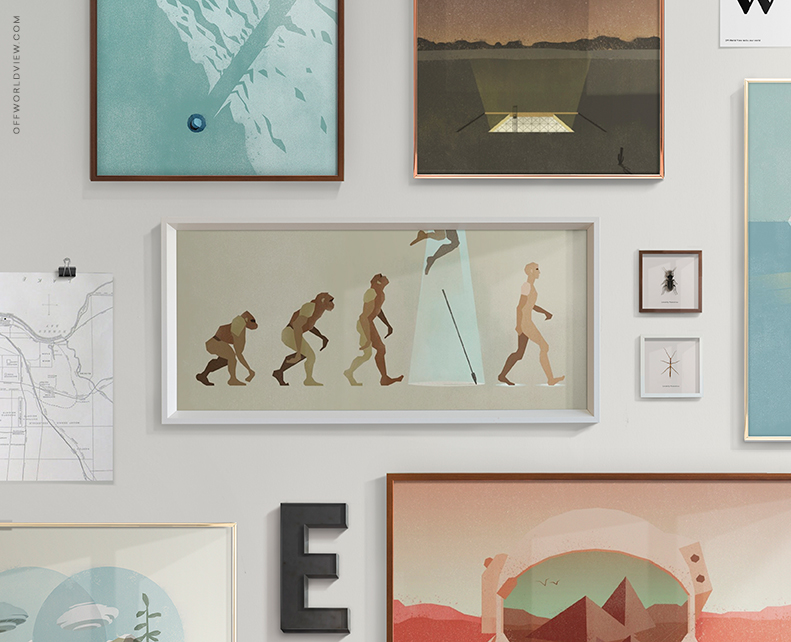Speculative Evolution. Numbered and signed on reverse of print. High-quality stochastic print on 100 lb, low-acid, uncoated paper with archival ink. Ships rolled. Frame not included. Read about finding a frame before choosing a size.
The Story
The heated debate between Creationists and Evolutionists has the appeal of a cage match between old foes: religion in one corner, and science in the other. With religious leaders insisting on a biblical framework for human creation and scientists insisting on an evolutionary one, the crowd is drawn to the support of one side or the other. We share videos, cheering on the champions of our chosen side–Bill Nye, or Richard Dawkins, Ken Ham or Wendy Wright–as the fight spills over into our social spheres and drags with it unwitting bystanders.
But is it possible that the polarization of debate robs the crowd of alternative possibilities? This might ring especially true for the evolutionists in the fight, whose scientific bent should draw them toward a spirit of investigation and rediscovery. It could be that the noise of the crowd drowns out that inner voice of creativity, the one that is spurred to imagine the kinds of new hypotheses that lead to breakthrough discoveries. Enter the genre of speculative evolution.
Speculative evolution explores scientifically plausible alternative approaches to human, plant, and animal evolution–some of which borrow from both creationists and evolutionists. These alternative theories for evolution are usually explored within the confines of a science fiction story, often dreaming up ways in which life in far-flung places might’ve evolved intelligent forms from reptiles rather than primates, or imagining how life on earth might’ve descended from completely unexpected sources. Some forms of speculative evolution even imagine how human evolutionary biology might crossbreed with machine technology and artificial intelligence to one day create a new transhuman species.
The genre of speculative evolution might seem rooted in fantasy, but it takes no foray into fiction to derail Darwin’s theory of human evolutionary biology at its earliest genesis. If speculative evolution explores evolutionary possibilities off the beaten track, there might never have been such a track had the ideas of one of the founding fathers of the theory of human evolutionary biology gained sway.
Working parallel to Charles Darwin, scientist Alfred Russell Wallace developed a nearly identical theory of biological evolution, except Wallace admitted that although the new theory of natural selection explained the development of all plant and animal life, it didn’t adequately explain the emergence of human intelligence to the degree that humans have gone on to create art, music, and literature.
Wallace thought that there was a certain je ne sais quois to the development of the modern human—some sort of “X factor.” But the time was the era of the Enlightenment, when the paradigm of Western thought was shifting away from religious mysticism towards rational thought, so his views which left too much room for the divine never gained traction.
Looking back on Wallace’s views today, it seems as though he left the door open for theories of speculative evolution which could insert any number of unknowns in the great big blank Wallace left open in the middle of a theory that science today has considered completely settled.
Speculative Evolution borrows from Rudolph Zallinger’s much-parodied illustration, “March of Progress” first published in anthropologist F. Clark Howell’s 1965 volume of Life Nature Library titled “Early Man” to playfully expose a theory on human evolution that Wallace probably didn’t quite have in mind but that has been gaining popularity in recent times. The idea first came from archaeologist Zecharia Sitchin whose unique (and unsurprisingly controversial) interpretations of Sumerian cuneiform tablets tells a story of ancient aliens blending their genetics with that of early primates to produce modern Homo Sapiens Sapiens. Researchers like Lloyd Pye have more recently run with this idea in total seriousness, and the latest instalments of Ridley Scott’s Alien franchise flirts with an almost identical premise.
Speculative Evolution: The Artwork
Whether you view Speculative Evolution as fact or fantasy, its true spirit is about rediscovery. Like the whole genre of science-fiction, Speculative Evolution shows viewers and readers a slightly different version of a familiar world so that they might enjoy a new, inspired view where they didn’t think there was room for one.


